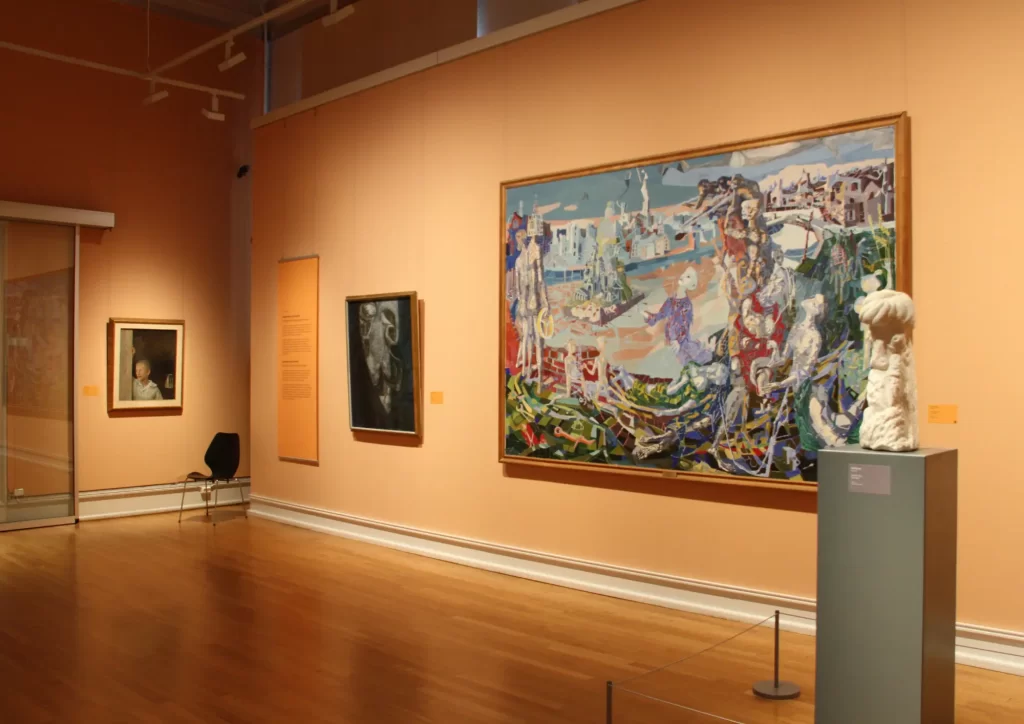Art Talks
Artful Displays: The Journey of Curating and Sharing Private Collections

Curating a private art collection is both an art and a science, requiring a keen eye for aesthetics and a deep understanding of the works’ cultural and historical contexts. Whether it’s a collection of contemporary pieces, classical works, or a mixture of different art forms, the way a collection is displayed and shared can greatly enhance its value and impact. This article explores the essential aspects of curating private art collections, from the initial acquisition of pieces to the artful arrangement and sharing of these collections with a broader audience.
The journey of curating a private art collection begins with acquisition. Collectors often start with personal interests, purchasing pieces that resonate on an emotional or intellectual level. As the collection grows, a more strategic approach can be adopted, focusing on particular artists, periods, or styles. Engaging with art advisors, attending art fairs, and participating in auctions are common practices that help collectors make informed decisions and discover emerging talents.
Once pieces are acquired, the next step is displaying them. The arrangement of artworks within a space significantly influences their perception. Grouping artworks by theme, style, or period can create a narrative that guides viewers through the collection. This approach not only enhances the visual appeal but also provides a deeper understanding of the pieces. Proper spacing ensures that each piece can be appreciated individually. Lighting is crucial; natural light can bring out the colors and textures of artworks, while artificial lighting can be adjusted to highlight specific features and create desired atmospheres. It is important to consider the context in which the art is displayed. Large, bold pieces may dominate a space, while smaller, more delicate works can be displayed in more intimate settings. The placement should reflect the artwork’s character and significance. Rotating artworks keeps the collection dynamic and engaging. Regularly updating displays can prevent visual fatigue and allow different pieces to be appreciated anew.
Private collections, while often enjoyed in solitude, can gain new dimensions when shared. Sharing can take various forms, from private viewings to public exhibitions, and even digital showcases. Hosting private viewings and events for friends, family, and fellow art enthusiasts fosters a sense of community and dialogue. These gatherings can include talks by art historians or the artists themselves, enhancing the educational value of the collection. Collaborating with galleries and museums to exhibit parts of a collection opens it up to a wider audience. These exhibitions not only provide exposure for the artworks but also contribute to the public’s cultural enrichment. In the digital age, creating an online presence for a collection is increasingly important. Virtual tours, high-quality photographs, and detailed descriptions can make the collection accessible to a global audience. Social media platforms and dedicated websites can serve as powerful tools for sharing and promoting the collection.
Proper care and documentation are vital aspects of curating a collection. Preservation ensures the longevity of the artworks, while documentation provides a record of the collection’s history and provenance. Implementing appropriate conservation measures, such as climate control and protective framing, helps in preserving the physical integrity of the artworks. Regular maintenance and professional conservation services can address any damage or deterioration. Keeping detailed records of each piece, including purchase history, provenance, and any restoration work, is crucial. A well-documented collection adds to its value and aids in future sales or exhibitions.
Technology plays a significant role in modern art curation. Digital tools and platforms offer new ways to manage, display, and share collections. Specialized software helps in cataloging and managing the collection efficiently. These tools provide features like inventory tracking, condition reports, and valuation updates. Augmented and virtual reality technologies offer immersive ways to experience art. Virtual reality can create simulated gallery spaces, while augmented reality can overlay digital information onto physical artworks, providing interactive and educational experiences.
Passion and expertise blends in the multifaceted endeavor of curation, much more of private art collections. From the careful acquisition of pieces to their thoughtful display and sharing, each step enhances the collection’s value and impact. As technology advances, new opportunities arise for collectors to engage with their collections and share them with the world. Ultimately, the art of curating collections lies in creating a meaningful dialogue between the artworks, the curator, and the audience, enriching the cultural landscape for all.
Written by Cherry Fulgar
For more information, contact Imahica Art at +63 917 894 5646, or email thegallery@imahica.art
Imahica Art is a contemporary art gallery in the Philippines, showcasing works by both emerging and established artists. As one of the newer venues in the Philippines, it significantly enhances the diversity and appreciation of contemporary art collections and investments, both locally and globally. Located at the intersection of Lee Street and Shaw Boulevard in Wack-Wack, Mandaluyong City, the gallery is fully accessible and open to the public for free unless otherwise stated.

